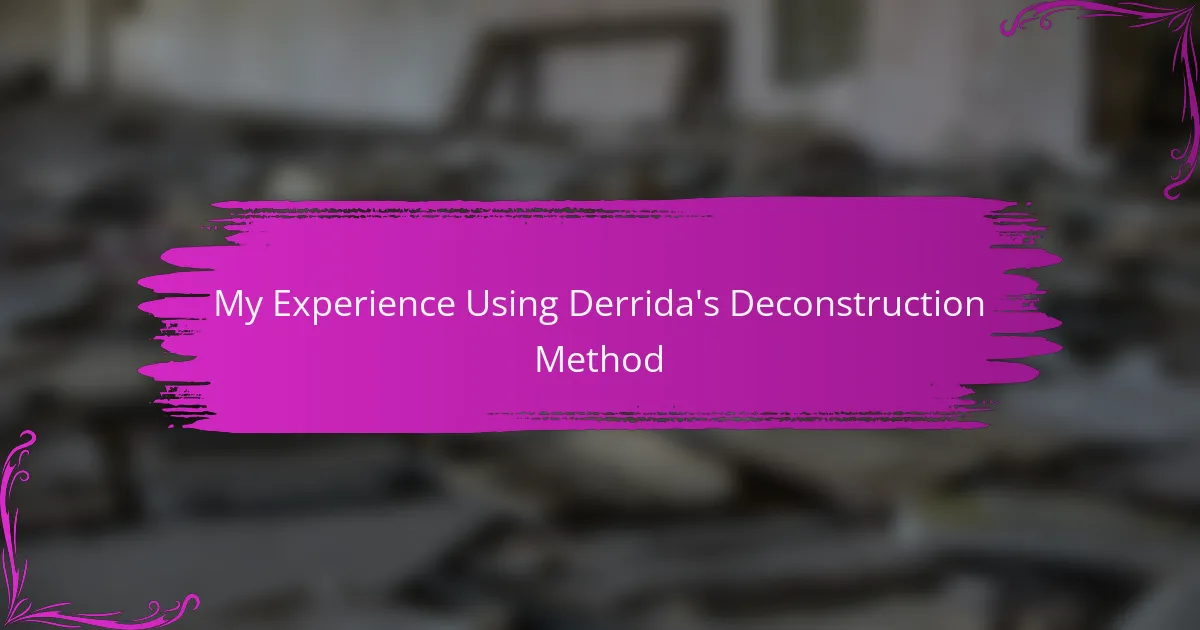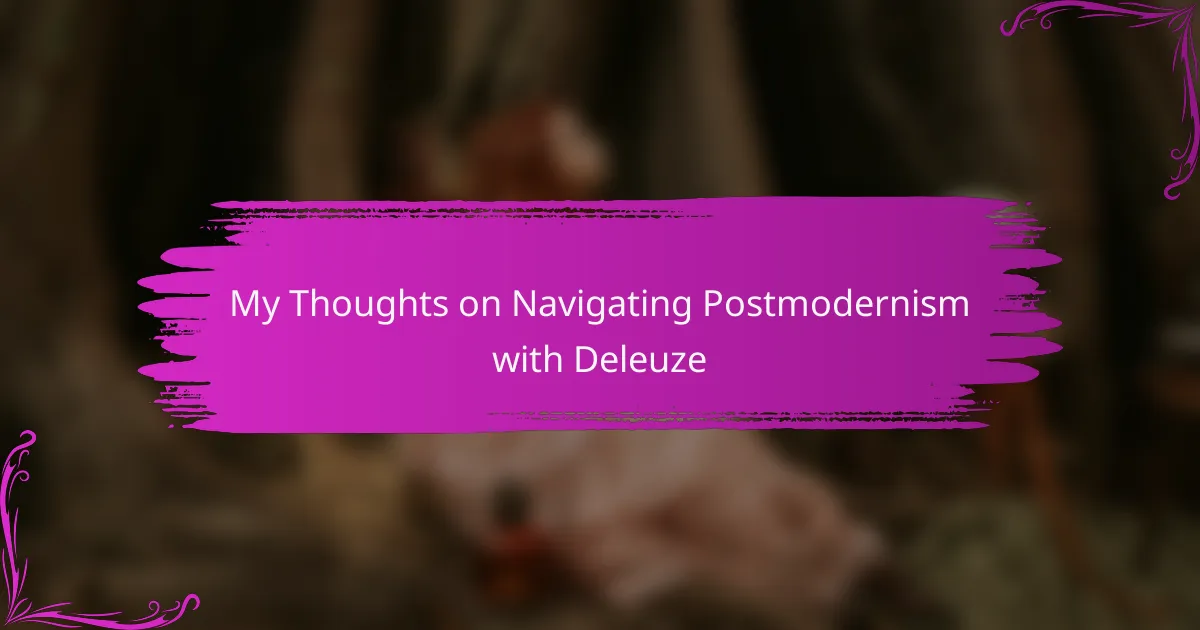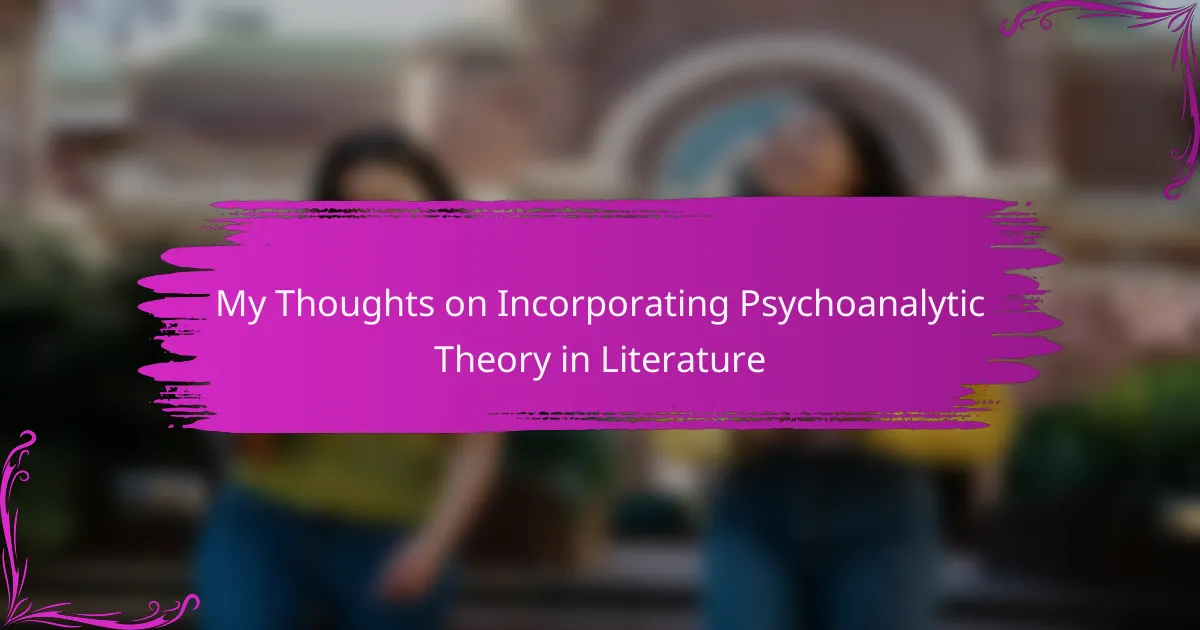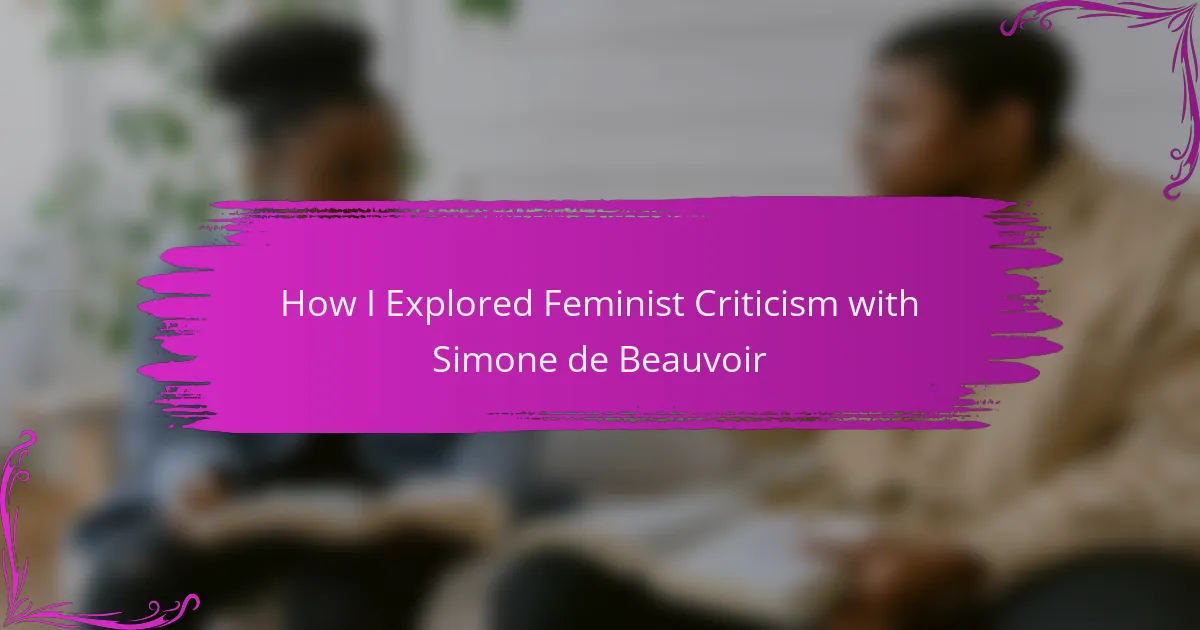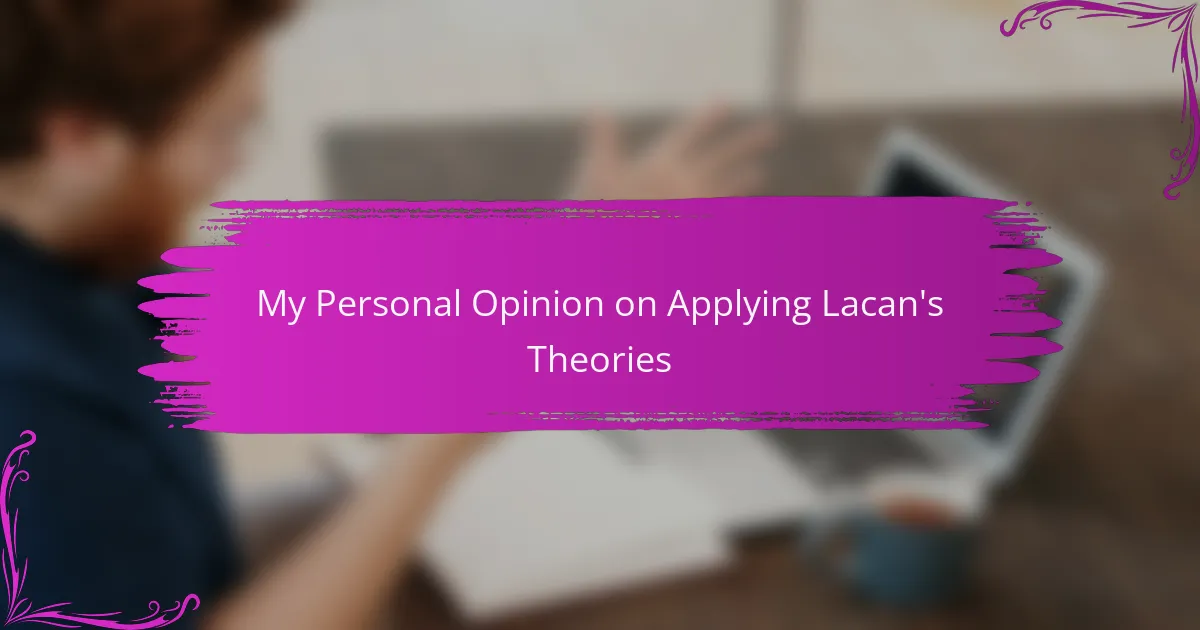Key takeaways
- Deconstruction challenges fixed meanings in texts, encouraging multiple interpretations and deeper critical thinking.
- Applying deconstruction involves identifying dichotomies, questioning assumptions, and embracing ambiguity to enrich understanding.
- Engaging with deconstruction can transform one’s reading experience, making literature feel dynamic and alive.
- Collaborative discussions can help overcome challenges in understanding complex texts, enhancing insight and appreciation.
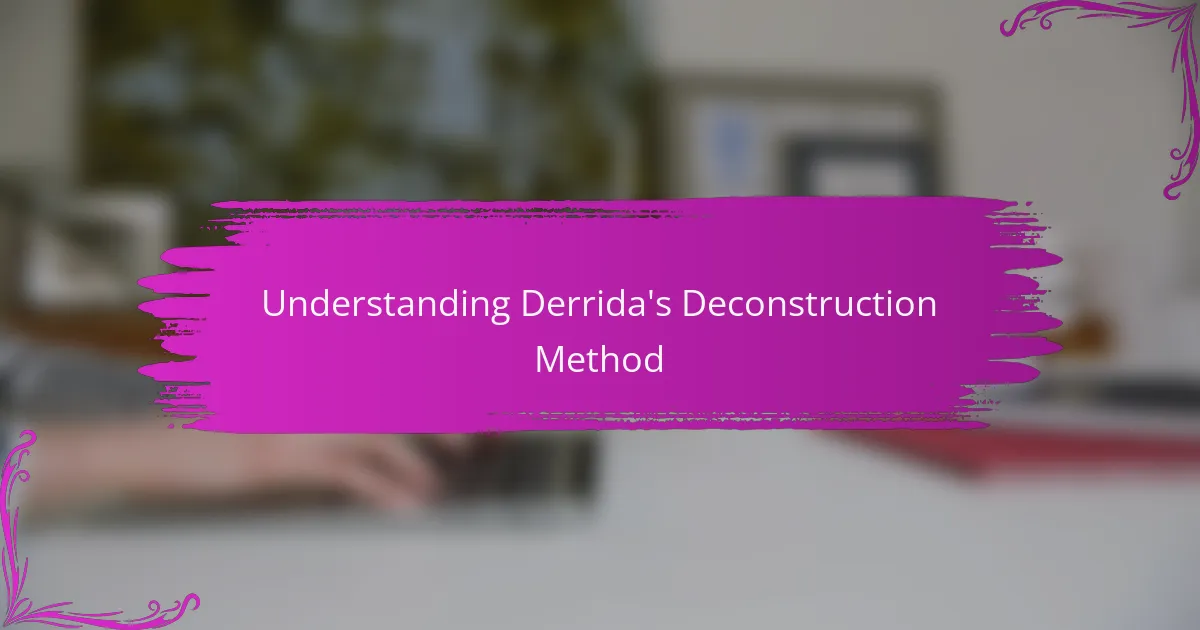
Understanding Derrida’s Deconstruction Method
Understanding Derrida’s Deconstruction Method can be a bit of a journey, one that opened up new ways of thinking for me. At its core, deconstruction challenges the idea that texts have fixed meanings. I remember the first time I realized this during a class discussion; it felt like the ground shifted beneath my feet. Was I really looking at literature in a way that limited its potential?
As I delved deeper, I found that deconstruction is not just about tearing down meanings, but rather about exploring the complexities and ambiguities within a text. For instance, Derrida encourages us to consider the relationship between words and the ideas they signify. I often ask myself, how many layers of interpretation can a single sentence hold? This process of inquiry filled my reading experience with excitement and anticipation.
I also came to appreciate how deconstruction prompts critical thinking and openness to multiple perspectives. It invites us to question hierarchical assumptions in texts, leading to richer interpretations. Reflecting on my own experiences, I realize that engaging with deconstruction has significantly deepened my understanding of literature, transforming each reading into a richer tapestry of meaning. Isn’t it enlightening to discover that one sentence can lead to so many possibilities?
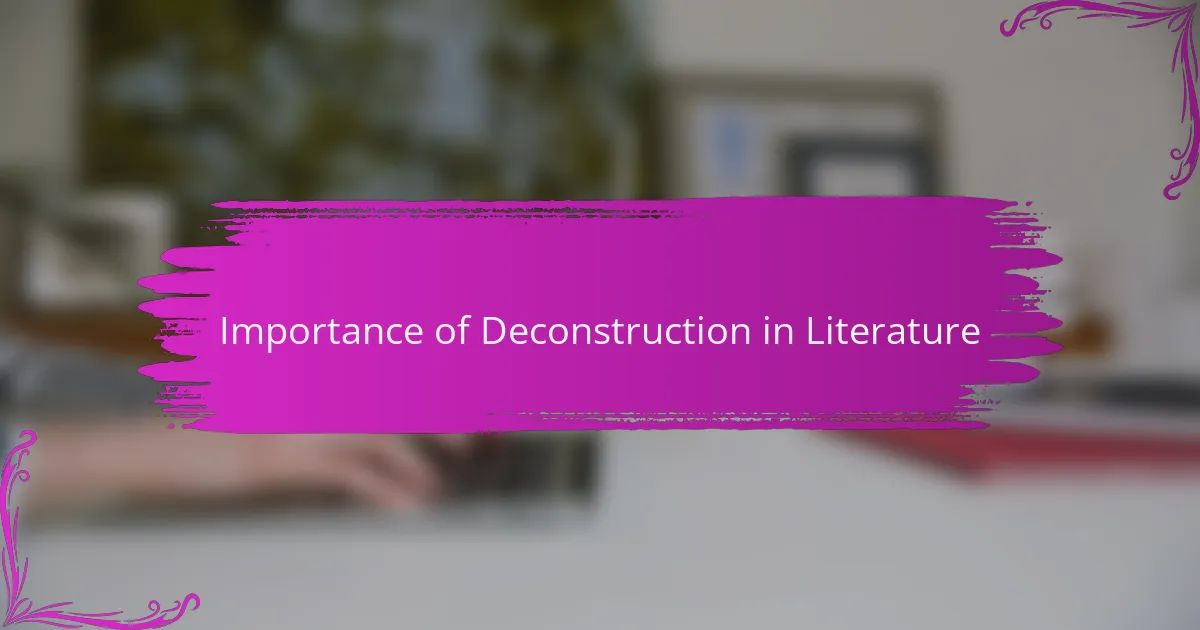
Importance of Deconstruction in Literature
Deconstruction has been a revealing lens for examining texts, allowing me to uncover layers of meaning that I often didn’t notice at first glance. When I started using Derrida’s method, I was struck by how it challenged the conventional interpretations I had previously accepted, making me realize that literature can be infinitely complex. This shift in perspective not only deepened my appreciation for the craft but also ignited a passion for questioning the narratives we consume.
The importance of deconstruction in literature can be summarized as follows:
- Encourages critical thinking by revealing underlying assumptions in texts.
- Allows for multiple interpretations, showcasing the richness of literary works.
- Uncovers the relationship between language and meaning, which is vital for understanding human communication.
- Fosters a deeper emotional connection to the text as we engage with its contradictions and complexities.
- Helps identify biases within literature, prompting readers to question societal norms and ethics.

How to Apply Deconstruction in Analysis
Applying Derrida’s deconstruction method in literary analysis is both liberating and challenging. I remember the first time I attempted to dissect a seemingly straightforward text. I was struck by how layers of meaning revealed themselves as I questioned binaries like good vs. evil or hero vs. villain. It was exhilarating to see the text open up in unexpected ways, transforming how I interacted with literature.
To effectively apply deconstruction in your analysis, consider these steps:
- Identify Dichotomies: Look for oppositions within the text (e.g., presence vs. absence) that can be unraveled.
- Question Assumptions: Challenge what is taken for granted. Does the text reinforce certain ideas, or does it subvert them?
- Focus on Language: Pay close attention to word choices and structures. Language shapes meaning, and small shifts can lead to significant insights.
- Embrace Ambiguity: Accept that texts often have multiple interpretations. Embracing this complexity can enrich your understanding.
- Reflect on Context: Consider how the text interacts with historical, cultural, or social contexts, opening up yet another layer of meaning.
By delving deep into these strategies, you’ll find that deconstruction doesn’t just analyze a text; it helps you explore your own perceptions and biases as a reader.
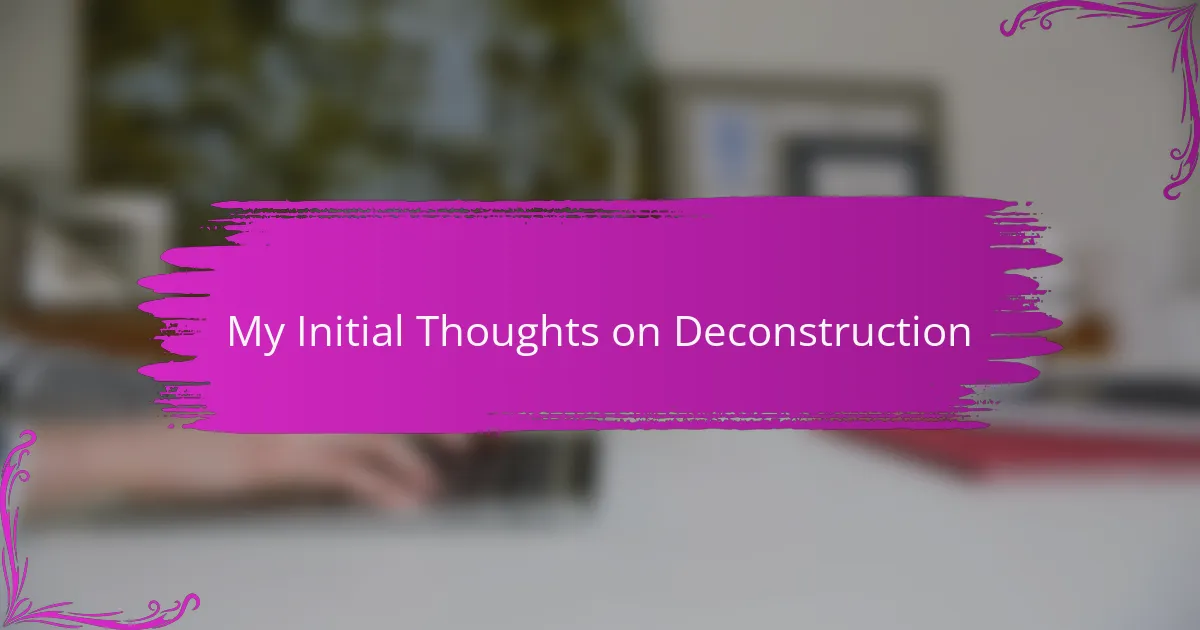
My Initial Thoughts on Deconstruction
Deconstruction initially struck me as a complex and somewhat intimidating approach to literature. I remember the first time I encountered Jacques Derrida’s ideas; it felt like standing at the edge of a vast ocean of text—intriguing yet overwhelming. As I delved deeper, I discovered that deconstruction is not just about tearing down texts but also about revealing the multiple meanings lurking beneath the surface.
In my experience, embracing deconstruction changed the way I engaged with literature. It challenged my assumptions and encouraged me to question not only the texts themselves but also my own interpretations. This method opened my eyes to the nuances of language and meaning, leading to richer discussions and insights.
- Deconstruction is a tool for examining the contradictions within texts.
- It encourages critical thinking and fosters a questioning mindset.
- My initial fears transformed into excitement as I recognized the depth of analysis it offered.
- Engaging with deconstruction helped me appreciate the fluidity of meaning and context.
- I found that it enriched my reading experience, making literature feel dynamic and alive.
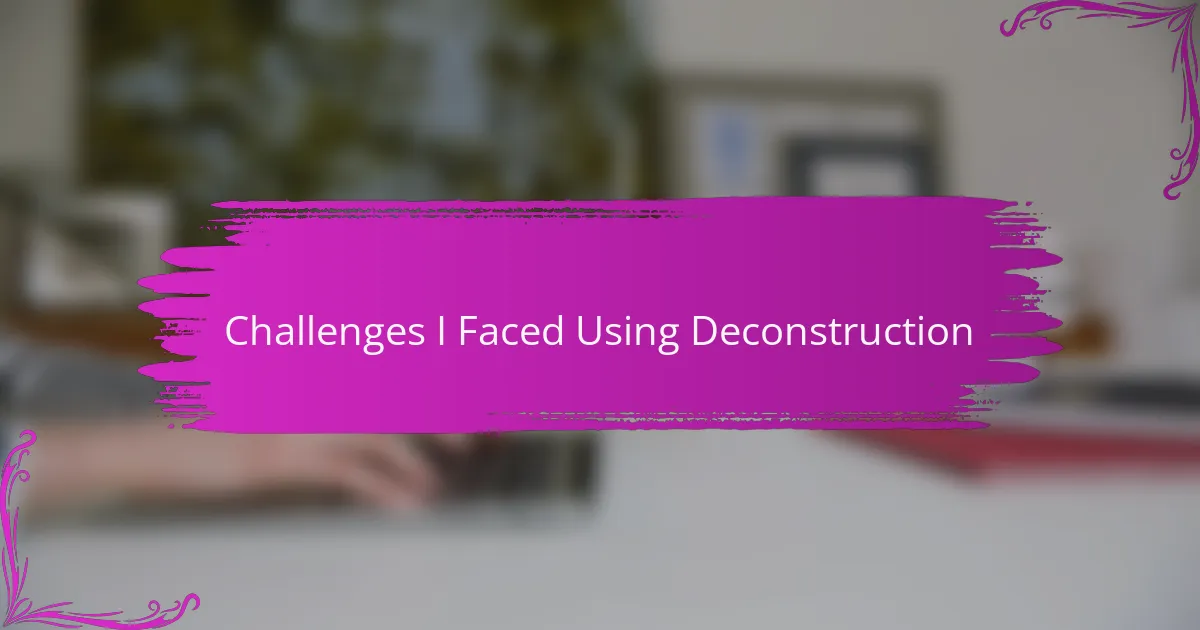
Challenges I Faced Using Deconstruction
Using Derrida’s deconstruction method presents a unique set of challenges that can sometimes feel overwhelming. I remember my first serious attempt at deconstructing a text; I was both excited and anxious. The method requires me to unravel layers of meaning, and sometimes, this leads to more confusion than clarity. I often found myself doubting my interpretations, questioning if I was actually grasping the text or simply overanalyzing.
Another significant challenge was the abstract nature of deconstruction itself. As I navigated through complex readings, I experienced moments of frustration when philosophical jargon clouded the core ideas. It was difficult to embrace the ambiguity without feeling lost. Engaging with classmates helped; their perspectives provided support and enriched my understanding, reminding me of the collaborative aspect of literary analysis.
In retrospect, these challenges were instrumental in pushing me to think critically about texts. Embracing uncertainty became a part of my learning journey, ultimately deepening my appreciation for literature’s complexity.
| Challenges | Emotional Insights |
|---|---|
| Struggling with abstract concepts | Frustration but also a profound sense of growth |
| Doubt in interpretations | Initial anxiety leading to enhanced critical thinking |
| Complex readings | Feeling overwhelmed but encouraged by peer discussions |

Insights Gained from My Experience
Engaging with Derrida’s deconstruction method opened my eyes to the complexities of texts that I once thought were straightforward. I remember the first time I applied deconstruction to a piece of classic literature; I was surprised at how many layers of meaning I uncovered. It felt like peeling back the skin of an onion, where each layer revealed something new and insightful.
Through my exploration, I learned that deconstruction is not just about identifying contradictions; it’s about appreciating the multiplicity of interpretations that exist within a text. I found that when I let go of seeking a singular meaning, I could engage more deeply with the material, allowing my personal experiences and emotions to influence my understanding. This process often felt liberating, transforming my approach to reading and writing.
- Gained appreciation for the complexity of language and meaning.
- Developed critical thinking skills by examining texts from various angles.
- Fostered a sense of personal connection to literature, enriching my reading experience.
- Encountered the idea of “play” in texts and the joys of exploring ambiguity.
- Realized the importance of context in shaping interpretation, both culturally and personally.
